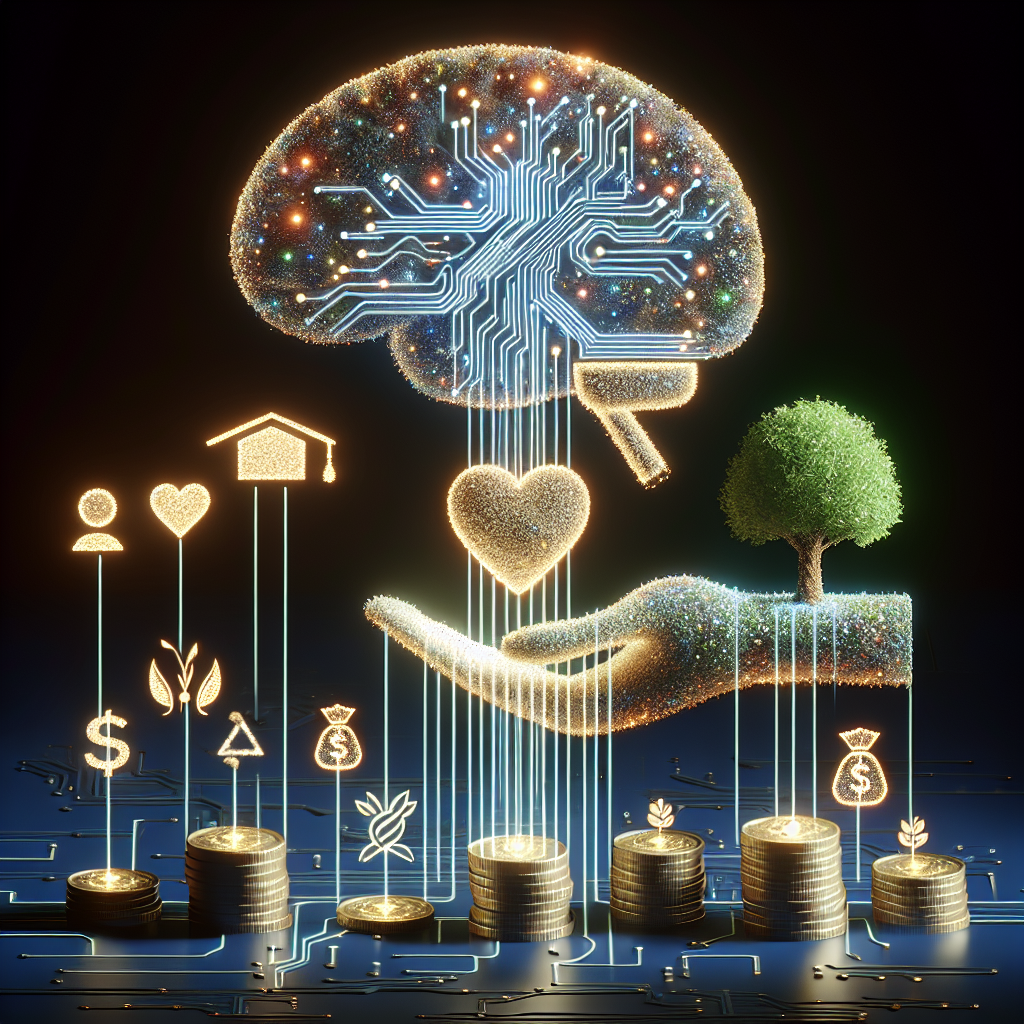In recent years, artificial intelligence (AI) has been increasingly leveraged in the philanthropic world to drive social impact. From helping nonprofits better target their resources to assisting in disaster response efforts, AI is revolutionizing the way organizations approach philanthropy. This article will explore the role of AI in driving social impact through philanthropy and the potential benefits and challenges associated with its use.
One of the key ways in which AI is making an impact in the philanthropic sector is through its ability to analyze large amounts of data quickly and efficiently. Nonprofits can use AI algorithms to sift through vast amounts of information to identify trends, patterns, and insights that can help them make more informed decisions about where to allocate their resources. This can be particularly useful in areas such as fundraising, where organizations can use AI to predict donor behavior and tailor their campaigns accordingly.
AI is also being used to improve the efficiency of social service delivery. For example, chatbots powered by AI technology can provide round-the-clock support to individuals in need, offering information and guidance on a wide range of topics. This can help to bridge the gap between those who require assistance and the services that are available to them, ensuring that help is always within reach.
In addition, AI is being used to enhance disaster response efforts. Natural disasters such as hurricanes, earthquakes, and wildfires can cause widespread devastation and displacement, making it difficult for organizations to coordinate relief efforts. AI-powered tools can help to streamline these efforts by analyzing satellite imagery to identify areas in need of assistance, predicting the path of a disaster to help with evacuation planning, and even coordinating the delivery of aid to affected areas.
Furthermore, AI is helping to democratize access to information and resources. For example, AI-powered translation tools can help to break down language barriers, enabling individuals to access information and services in their own language. This can be particularly beneficial for marginalized communities who may face barriers to accessing vital resources due to language differences.
Despite the many benefits of AI in driving social impact through philanthropy, there are also challenges that must be addressed. One concern is the potential for bias in AI algorithms, which can perpetuate existing inequalities and reinforce stereotypes. For example, if a facial recognition algorithm is trained on a dataset that is predominantly made up of white faces, it may struggle to accurately identify individuals with darker skin tones. This can have serious consequences, particularly in areas such as criminal justice where AI is being used to make decisions about individuals’ guilt or innocence.
Another challenge is the ethical implications of using AI in philanthropy. For example, there may be concerns about data privacy and security, particularly when sensitive information is being collected and analyzed. It is important for organizations to be transparent about how they are using AI and to ensure that they are following best practices to protect individuals’ privacy and rights.
Despite these challenges, the potential of AI to drive social impact through philanthropy is immense. By harnessing the power of AI technology, organizations can make more informed decisions, reach a wider audience, and deliver services more efficiently. As AI continues to evolve and improve, its role in philanthropy is only likely to grow, leading to even greater positive outcomes for communities in need.
FAQs:
Q: How is AI being used in fundraising?
A: AI is being used in fundraising to predict donor behavior, personalize campaigns, and identify potential donors. By analyzing data on past giving patterns and preferences, organizations can tailor their fundraising efforts to better meet the needs and expectations of their donors.
Q: How can AI help in disaster response efforts?
A: AI can help in disaster response efforts by analyzing satellite imagery to identify areas in need of assistance, predicting the path of a disaster to assist with evacuation planning, and coordinating the delivery of aid to affected areas. This can help to streamline relief efforts and ensure that help reaches those in need quickly and efficiently.
Q: What are some of the challenges associated with using AI in philanthropy?
A: Some of the challenges associated with using AI in philanthropy include the potential for bias in AI algorithms, concerns about data privacy and security, and ethical implications related to the use of AI technology. It is important for organizations to address these challenges and ensure that they are using AI in a responsible and ethical manner.

